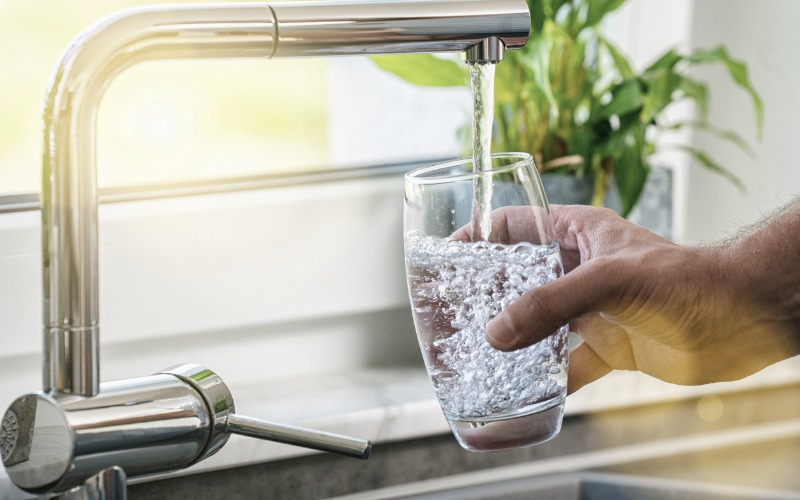Introduction
Access to safe, clean drinking water is essential for health and well-being. However, even if your water appears clean, it can contain harmful contaminants. Regularly testing and improving water quality ensures your household access to safe drinking water. You can protect your health by understanding the importance of water testing and improving water safety.
Importance of Water Quality Testing
Water quality testing is crucial for identifying contaminants that could harm your health. By investing in water testing, you can determine the purity of your water and take necessary actions to remove any toxic substances. Regular testing can detect issues early, allowing you to address them before they become more severe.
Testing your water periodically enables you to monitor for changes that might indicate new contamination, helping you maintain a continuous supply of safe drinking water. This proactive approach ensures adjustments or improvements are based on accurate, up-to-date information.
Common Contaminants in Drinking Water
Various contaminants, including bacteria, lead, pesticides, and nitrates, can enter your water supply. Each contaminant poses different health risks, making drinking water testing essential. Bacteria, for instance, can cause gastrointestinal illnesses, while lead exposure can result in developmental issues among children. Pesticides and nitrates are known to have various adverse health impacts, including the potential for cancer and reproductive problems.
Understanding the specific contaminants in your water is the first step to addressing and eliminating them. Identifying these contaminants allows you to choose appropriate treatment methods and ensure safe drinking water.
DIY Water Testing Kits
DIY water testing kits offer a convenient and affordable option for initial water quality assessments. These kits are designed to test for a range of common contaminants, making them an excellent first step for homeowners concerned about water quality. The kits typically include instructions and necessary materials to perform various tests at home.
While DIY kits can provide valuable insights, professional testing may be more comprehensive and accurate. They are ideal for detecting obvious issues but may not identify all contaminants. Using a DIY kit can help you decide whether more thorough testing and treatment are necessary.
Professional Water Testing Services
Professional water testing services offer a more detailed and accurate water quality analysis. Experts use advanced methods and equipment to identify a wide range of contaminants that DIY kits might not detect. These services provide comprehensive reports that help you understand the issues affecting your water.
Professional testing can help you meet regulatory requirements and ensure your water meets safety standards. This thorough evaluation provides peace of mind and informs you of the best treatment solutions for improving water quality.
Steps to Improve Home Water Quality
Improving your home water quality involves several steps, including installing water treatment systems and regular maintenance. Here are some steps you can take:
- Install water filters or softeners that target the specific contaminants identified in your water.
- Replace filters according to the manufacturer’s recommendations to ensure continued effectiveness.
- Address any potential sources of contamination, such as replacing old pipes or plumbing components.
Implementing these measures enhances water quality and ensures your household access safe, clean drinking water.
Choosing the Right Water Filtration System
Selecting the appropriate water filtration system depends on the contaminants in your water. Various options include activated carbon filters, reverse osmosis systems, and ultraviolet purifiers. Each type of system is designed to address specific pollutants, making it essential to choose the one best suited for your needs.
Activated carbon filters can remove chlorine and organic compounds, improving taste and odor. Reverse osmosis systems effectively remove a broader range of contaminants, including lead and nitrates. Ultraviolet purifiers can eliminate bacteria and other pathogens. Understanding the specifics of your water quality can help you select the most effective filtration system and ensure your water is safe for consumption.
Ensuring Ongoing Water Safety and Quality
Maintaining water safety and quality requires regular testing, monitoring, and adaptation to new issues. Here are some tips to ensure long-term water safety:
- Schedule regular water tests to monitor for any changes or new contaminants.
- Keep up with the latest advancements in water treatment technology and upgrade your system as needed.
- Stay informed about local water quality reports and potential issues in your area.
By continually managing and improving your water quality, you can provide your household with a reliable source of safe drinking water. Regular maintenance and staying informed about water quality issues are vital to protecting your family’s health.
Conclusion
Safe drinking water in your home is crucial to protecting your health and well-being. Regular DIY and professional water testing helps identify contaminants and provide the necessary information to address any issues. By understanding common contaminants and choosing the right water filtration system, you can significantly improve the quality of your water. Continuous monitoring and proactive measures ensure long-term water safety, allowing you to enjoy clean drinking water for years.



